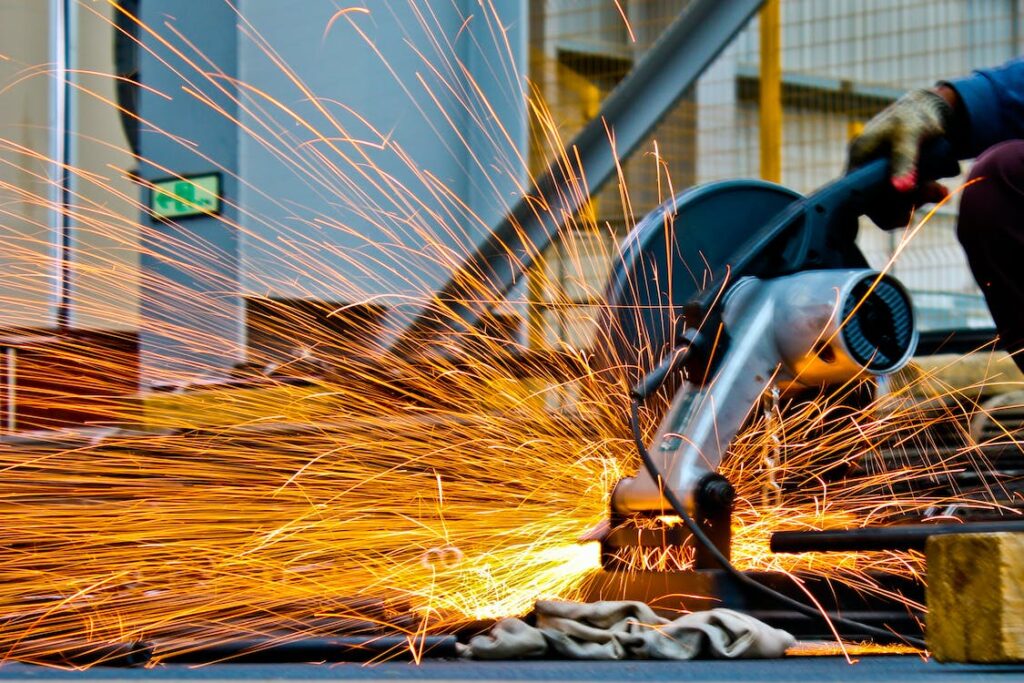The construction industry, often considered one of the most traditional sectors, is undergoing a profound transformation thanks to the integration of autonomous vehicles and equipment. This technological revolution promises to streamline processes, improve safety, reduce costs, and ultimately reshape the way we build our cities and infrastructure. In this article, we will explore the exciting developments in autonomous construction technology and delve into how these innovations are changing the game for the industry.

The Rise of Autonomous Construction
Before we dive into the future, it’s essential to understand the evolution of autonomous construction technology and how we arrived at this point.
1.The Evolution of Autonomous Construction Technology
Autonomous construction technology has been on the horizon for several decades, but recent advances in artificial intelligence, robotics, and connectivity have accelerated its development. The journey towards autonomy can be divided into several stages:
- Remote Control and Telematics: In the early 2000s, construction equipment manufacturers began incorporating telematics systems that allowed remote monitoring and control of machines. While not fully autonomous, these systems marked the first steps towards automation in construction.
- Semi-Autonomous Machines: The next stage saw the emergence of semi-autonomous machines that could perform specific tasks with minimal human intervention. For instance, bulldozers and excavators equipped with GPS and sensors could follow predefined paths or maintain grade levels independently.
- Full Autonomy: Today, we are witnessing the advent of fully autonomous construction equipment and vehicles. These machines can operate without human operators on board, making decisions in real-time based on data from various sensors and cameras.
Key Technologies Driving Autonomy
Several technologies have played a pivotal role in making autonomous construction a reality:
1. Artificial Intelligence (AI) and Machine Learning:
AI algorithms enable machines to perceive their surroundings, recognize objects, and make decisions. Machine learning models continuously improve equipment’s performance by learning from past experiences and data.
One of the core capabilities of AI algorithms in construction is their ability to enhance the perception of construction equipment and vehicles. These algorithms are designed to process vast amounts of sensor data in real-time, which includes inputs from cameras, LiDAR sensors, radar, and GPS. This sensory input forms a digital representation of the construction environment, akin to how humans use their senses to perceive the world.
For instance, cameras mounted on construction equipment provide a visual feed of the worksite. AI algorithms can analyse these images to identify objects, obstacles, workers, and other pertinent elements. This goes beyond mere object detection; it includes understanding the context and significance of these objects in the construction process. Recognizing the distinction between a pile of rubble and a structural component, for instance, is critical for autonomous machines to make informed decisions.
In addition to perception, AI empowers construction equipment with real-time decision-making capabilities. This means that autonomous machines can make split-second decisions based on the information they gather from their surroundings. These decisions encompass a range of tasks, from route planning and obstacle avoidance to executing precise movements for tasks like grading, excavation, and material placement.
2. Global Positioning System (GPS):
GPS technology provides precise location data, allowing autonomous vehicles and equipment to navigate construction sites accurately.
3. LiDAR (Light Detection and Ranging):
LiDAR (Light Detection and Ranging) sensors are a critical component of the sensory suite for autonomous construction equipment. They operate on a simple yet profound principle: emitting laser pulses and measuring the time it takes for those pulses to bounce back after hitting objects in the environment. This data is then processed to create highly detailed 3D maps of the construction site, capturing the precise shapes and locations of objects and terrain features.
4. Computer Vision:
Cameras and computer vision systems enable construction equipment to identify and track objects, people, and vehicles on the job site.
5. Connectivity and Data Sharing:
The Internet of Things (IoT) allows autonomous construction equipment to communicate with each other and central control systems, facilitating data exchange and remote monitoring.
Transforming Construction Processes
Autonomous vehicles and equipment are poised to revolutionise various aspects of construction processes, bringing numerous benefits to the industry:
1. Enhanced Safety
Safety is a paramount concern in the construction industry, where the risks associated with heavy machinery, complex worksites, and human error are prevalent. The integration of autonomous equipment into construction processes brings a transformative shift in how safety is approached and achieved.
Human operators of construction equipment are susceptible to fatigue, which can impair judgement and reaction times. Long hours of operation and physically demanding tasks can lead to exhaustion, increasing the likelihood of errors and accidents. Autonomous construction equipment, on the other hand, does not experience fatigue. They can operate continuously without breaks, maintaining consistent levels of focus and precision. This characteristic alone significantly reduces the risk of accidents caused by operator fatigue.
Similarly, distractions can pose a significant safety hazard on construction sites. Human operators may become distracted by various factors, such as communication devices, environmental conditions, or interactions with other workers. Autonomous equipment, devoid of distractions, can remain fully engaged in their tasks, further enhancing safety.
2. Increased Productivity
Autonomous construction equipment can work around the clock without breaks, leading to increased productivity. They can perform repetitive tasks with precision, reducing errors and rework. This higher efficiency translates into shorter project timelines and lower labour costs.
3. Cost Savings
While the initial investment in autonomous construction equipment can be substantial, the long-term cost savings are compelling. Lower labour costs, reduced fuel consumption due to optimised routes, and fewer equipment breakdowns all contribute to substantial financial benefits.
4. Improved Accuracy
The precision of autonomous equipment is unmatched. Machines equipped with GPS, LiDAR, and computer vision can perform grading, excavation, and other tasks with millimetre-level accuracy, ensuring that construction projects meet design specifications.
5. Remote Monitoring and Control
Construction managers and supervisors can remotely monitor and control autonomous equipment, providing real-time insights into project progress. This capability allows for quick decision-making and adjustments as needed.
Applications of Autonomous Construction Technology
Autonomous construction technology is versatile and applicable to a wide range of construction activities. Here are some key areas where these innovations are making a significant impact:
1. Earthmoving and Excavation:
Autonomous bulldozers, excavators, and graders can efficiently move earth, dig trenches, and shape terrain, all while maintaining precise grade levels.
2. Road Construction:
Autonomous pavers and road rollers can lay asphalt and compact it with high precision, leading to smoother and longer-lasting road surfaces.
3. Building Construction:
Autonomous bricklaying robots and 3D printers are capable of constructing walls and structures with remarkable speed and accuracy.

4. Mining and Quarrying:
Autonomous haul trucks and drilling rigs are revolutionising the mining industry by increasing efficiency and reducing the risk to human operators.
5. Demolition:
Autonomous demolition robots equipped with advanced sensors can selectively and safely dismantle structures, minimising debris and environmental impact.
6. Bridge Inspection and Maintenance:
Drones equipped with cameras and sensors can autonomously inspect bridges, identifying structural issues without the need for manual inspections that can be dangerous and time-consuming.
Challenges and Considerations
While the future of autonomous construction is promising, several challenges and considerations must be addressed:
1. Regulatory Hurdles:
The regulatory framework for autonomous construction equipment is still evolving. Governments need to establish guidelines and safety standards to ensure the safe operation of these machines.
2. Workforce Impact:
As automation becomes more prevalent in construction, there may be concerns about the impact on the workforce. However, it’s essential to recognize that automation can complement human labour, allowing workers to focus on more complex and value-added tasks.
3. Initial Costs:
The upfront costs of autonomous construction equipment can be a barrier for some companies. However, the long-term benefits in terms of efficiency and cost savings often outweigh the initial investment.
4. Data Security:
With the increased connectivity of autonomous equipment, data security becomes a critical concern. Ensuring that construction data remains confidential and protected from cyber threats is essential.
The Road Ahead
The future of construction is undeniably autonomous. As technology continues to advance and become more affordable, we can expect to see even greater adoption of autonomous vehicles and equipment in the construction industry.
1. Customization and Integration:
Manufacturers will continue to refine autonomous construction equipment, offering more customization options to meet specific project requirements. Additionally, seamless integration with Building Information Modeling (BIM) systems and other construction software will become standard.
2. Sustainability:
Autonomous construction equipment can contribute to sustainability goals by optimising resource use and minimising waste. These machines may also be powered by cleaner energy sources, further reducing their environmental impact.
3. Skilled Workforce Development:
The transition to autonomous construction will require a skilled workforce capable of operating and maintaining these machines. Training programs and educational initiatives will play a crucial role in preparing the industry for this transformation.
4. New Construction Methods:
The rise of autonomous equipment will likely lead to the development of entirely new construction methods and techniques. This could include more off-site prefabrication and modular construction, enabled by robots and automation.
5. Global Impact:
Autonomous construction technology is not limited to developed countries. It has the potential to improve infrastructure development in emerging economies, where labour shortages and inefficiencies are often more pronounced.
The construction industry is on the brink of a technological revolution, driven by autonomous vehicles and equipment. These machines promise to enhance safety, boost productivity, reduce costs, and transform the way we build our world. While challenges remain, the future of construction is undoubtedly more automated, efficient, and sustainable. Embracing these innovations will be essential for staying competitive and meeting the growing demands of the modern world. As we look ahead, it’s clear that the game is changing, and autonomous construction is at the forefront of this exciting transformation.
Elevate your construction management experience with WunderBuild! Our intuitive software offers comprehensive solutions designed to streamline your projects. Whether it’s creating seamless Gantt chart schedules, precise estimating, efficient takeoffs, or managing leads effectively, WunderBuild is equipped with all the features needed to optimise your construction workflow. Stay connected with instant messaging, and maintain detailed site diaries to keep your projects on track. Transform your construction management journey—find out more here!




